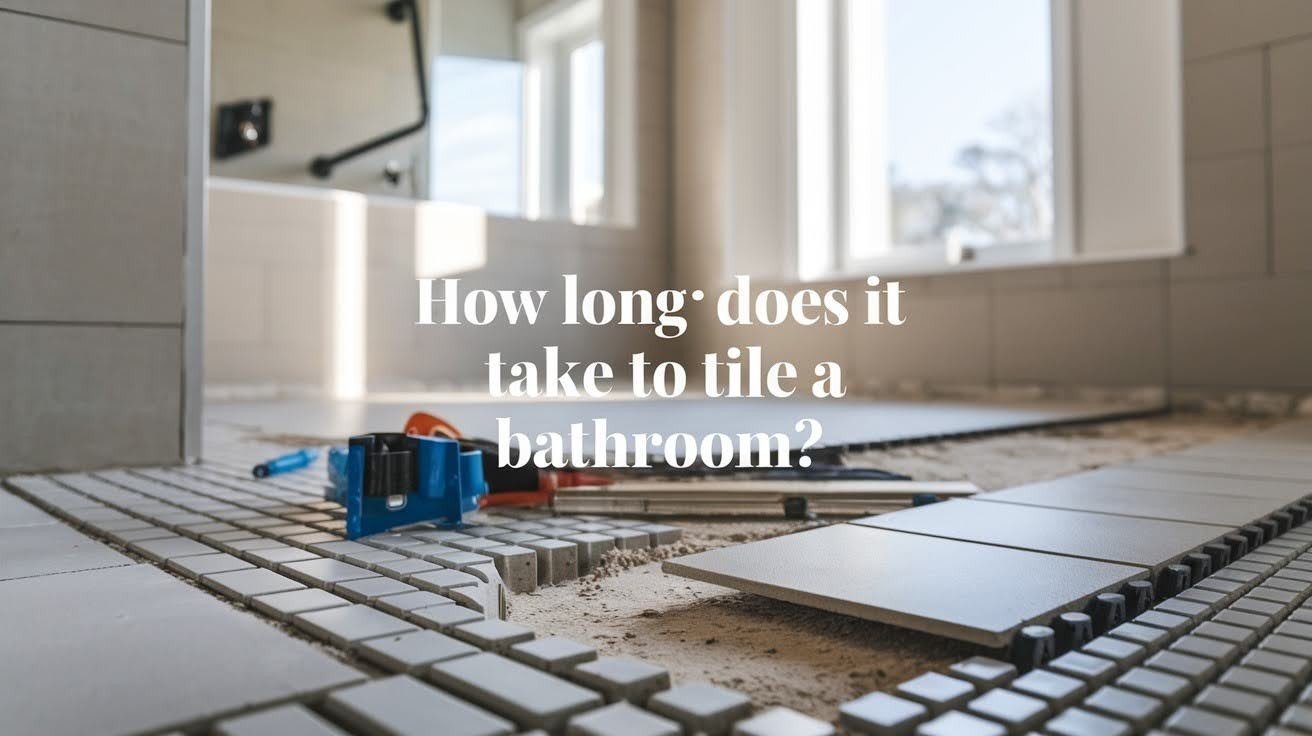Your sprinkler runs every morning, but the grass still dies. I made the same mistake once. I drowned my first lawn with too much water. Many people see brown spots and think the answer is more water. The truth is, overwatering can damage grass just like drought.
This guide shows you how to notice the signs before it is too late. You will see the difference between soggy soil and dry lawn problems. I share what I have learned in 15 years of lawn care and from fixing hundreds of yards.
The secret is balance. Know when to water and when to stop. Learn how much your grass really needs and keep your lawn healthy.
Understanding Overwatering and Its Impact on Grass
Too much water creates a chain reaction of problems that slowly kill your lawn from the roots up. I’ve watched perfectly healthy grass turn into soggy, diseased patches within just two weeks of excessive watering. Understanding what happens below ground helps you recognize the problem before it becomes unfixable.
What Happens When Grass Gets Too Much Water?
Water-logged soil acts like a sponge that never gets squeezed out. When soil stays saturated, oxygen can’t reach the roots where it’s desperately needed. Grass roots literally suffocate in wet conditions, just like you would underwater.
Shallow root systems develop because roots don’t need to search for water. Instead of growing deep and strong, they stay near the surface and become weak. This makes your grass vulnerable to disease, pests, and weather stress that healthy lawns can handle easily.
Why Overwatering Is So Common?
Most homeowners think brown spots automatically mean “add more water.” I made this exact mistake on my first lawn, running sprinklers twice daily until the grass turned to mush. The symptoms of overwatering and underwatering look surprisingly similar at first glance.
Automatic sprinkler systems get set once and forgotten about completely. People program them in spring and let them run the same schedule through fall, regardless of rainfall or temperature changes. Poor timing and excessive duration create the perfect storm for water damage.
9 Key Visual Signs Your Grass Is Overwatered
Learning to spot overwatering early saves you from costly lawn replacement and months of recovery time. These six visual cues appear in a specific order, giving you multiple chances to catch the problem. Each sign represents escalating damage that becomes harder to reverse.
1. Yellow or Pale Grass Color
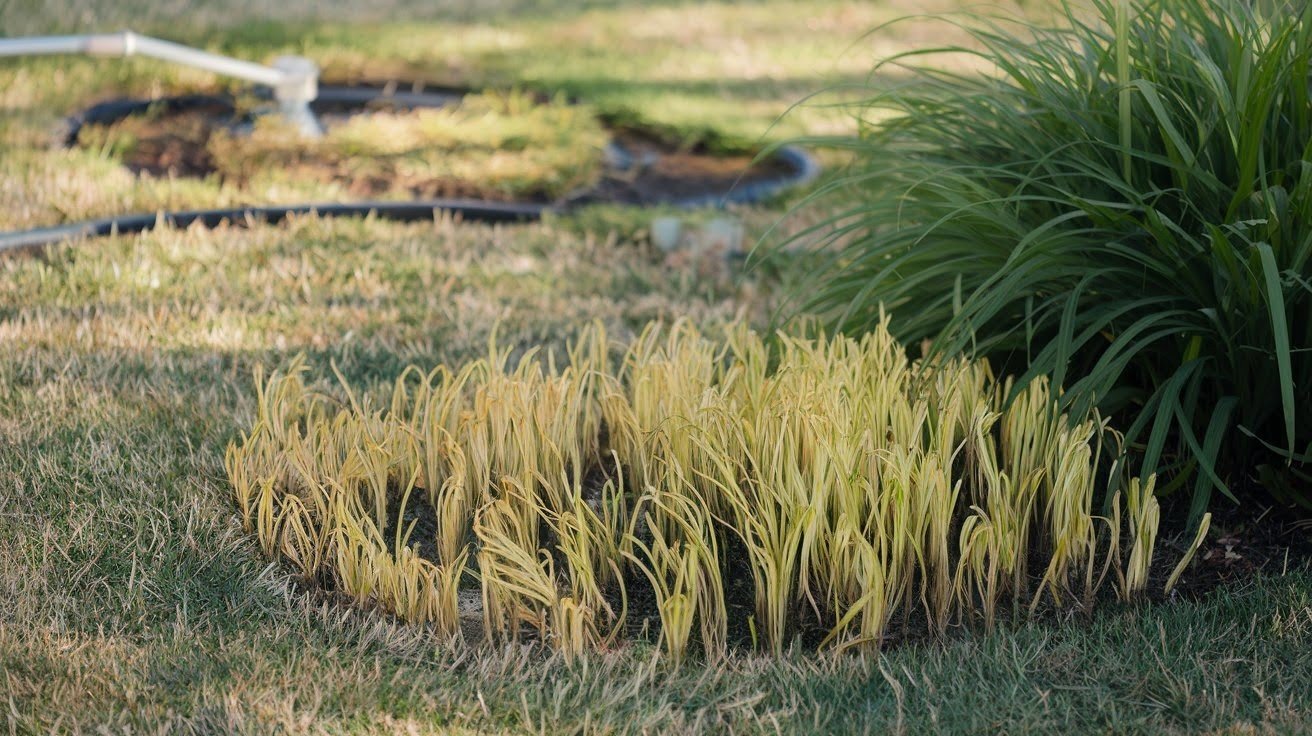
Overwatering yellow looks different from drought stress yellow once you know what to look for. Drought-stressed grass turns yellow from the tips down, while overwatered grass yellows from the base up. The oxygen-starved roots can’t process nutrients properly, creating that sickly pale appearance.
Areas with poor drainage show discoloration first, usually around sprinkler heads or low spots. If the yellowing continues without intervention, those pale areas will turn brown and die completely. The progression happens faster in warm weather when root damage accelerates.
2. Spongy or Soft Lawn Texture
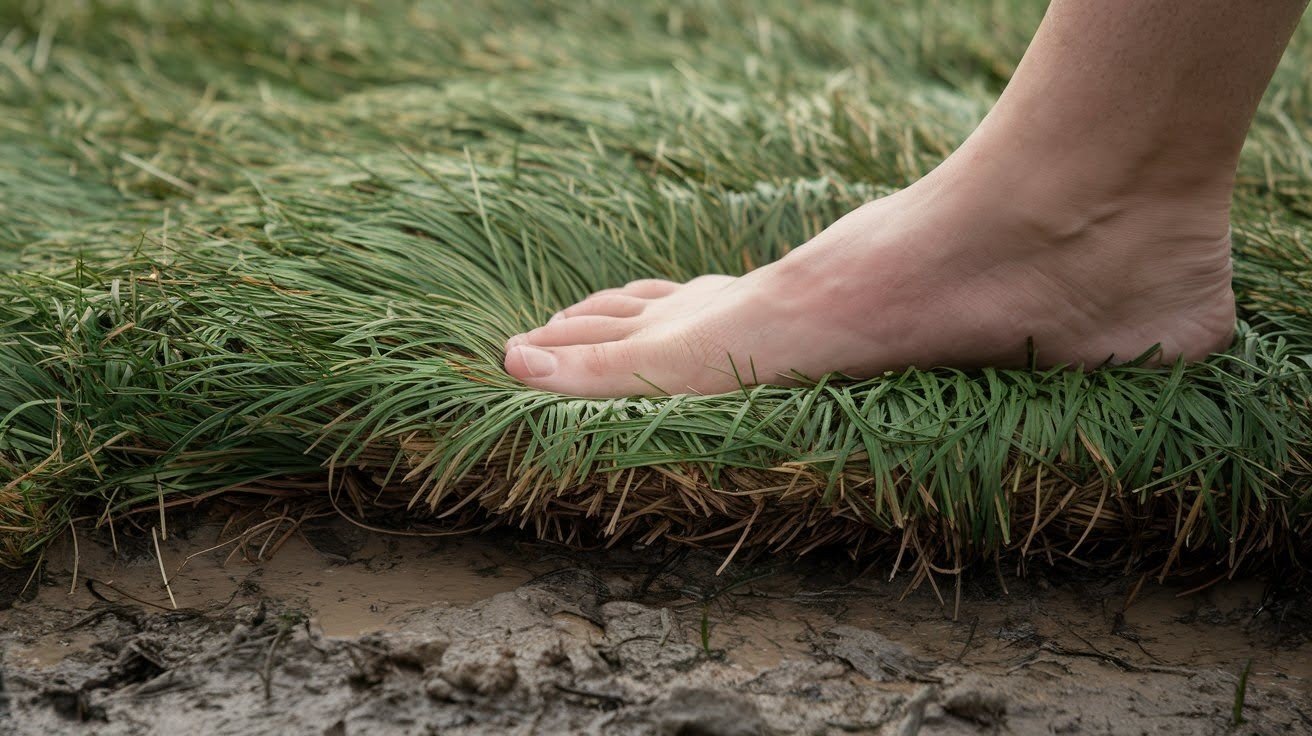
Healthy grass springs back when you walk on it, feeling firm and supportive underfoot. Overwatered lawns feel like walking on a wet sponge that gives way under pressure. Your footprints leave lasting impressions that don’t bounce back within minutes.
The squishy feeling comes from waterlogged soil that can’t support normal grass structure. Test this by walking across different areas of your lawn. If some sections feel noticeably softer or spongier than others, those areas are getting too much water.
3. Standing Water and Poor Drainage

Water should soak into healthy soil within 30 minutes after irrigation stops. Puddles that stick around for hours indicate saturated or compacted soil conditions. Areas around sprinkler heads commonly show this problem from repeated over-saturation.
Run your sprinkler system during daylight to check for pooling water. Mark any spots where water stands longer than an hour after the system shuts off. These problem areas need immediate attention to prevent permanent grass damage and soil compaction.
4. Mushrooms and Fungal Growth

Damp, poorly-drained soil creates perfect breeding conditions for fungi that damage grass roots and crowns. Small mushrooms popping up after watering indicate moisture levels that are way too high. Other fungal diseases like powdery mildew and rust follow close behind.
Early fungal problems appear as circular brown patches or white powdery substances on grass blades. These issues spread rapidly in wet conditions, turning small problem areas into large dead zones. Reducing moisture immediately slows fungal growth and prevents further spread.
5. Thin, Sparse, or Patchy Grass Growth
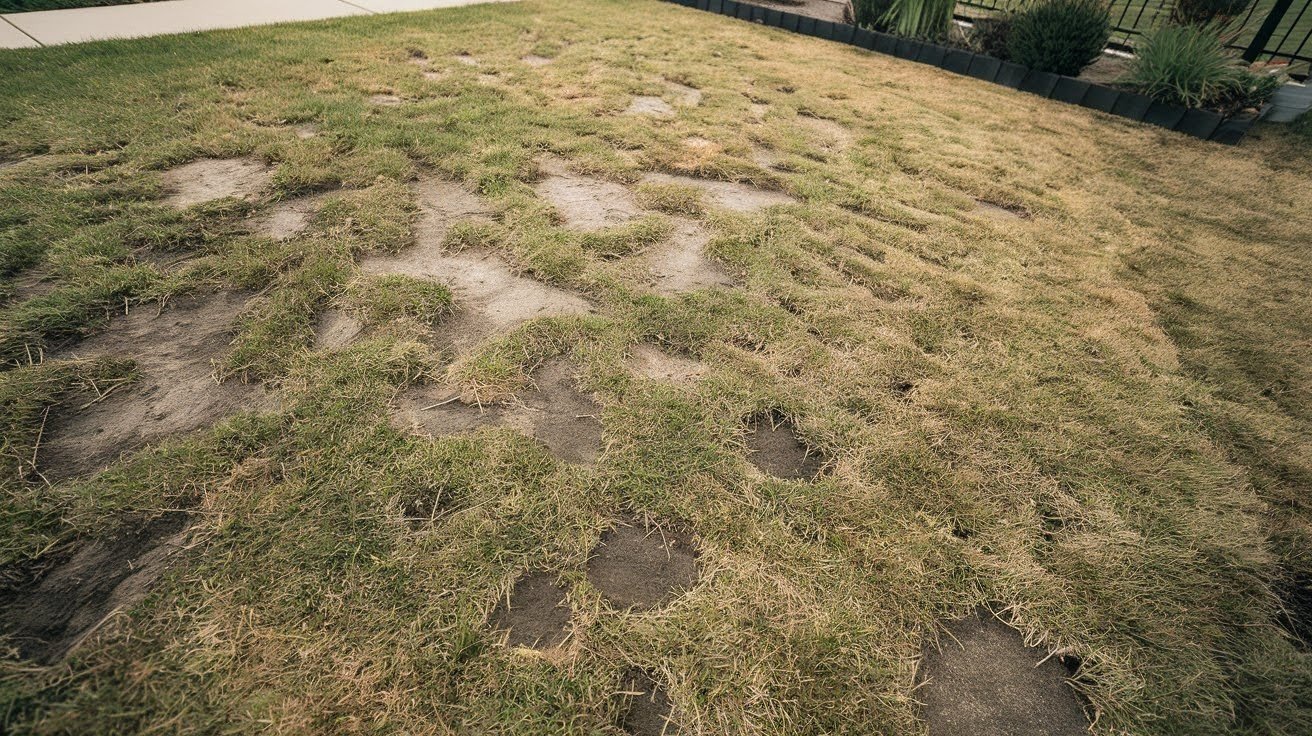
Weak root systems from overwatering can’t support dense, healthy grass growth above ground. Bare spots and thin areas develop even when you’re providing plenty of water and fertilizer. The grass struggles because the roots are too shallow and damaged to function properly.
Patchy growth patterns often follow sprinkler coverage areas, creating obvious lines between healthy and struggling sections. If your grass looks worse in areas that get the most water, overwatering is likely the culprit rather than drought stress or nutrient deficiency.
6. Increased Weeds and Pest Problems
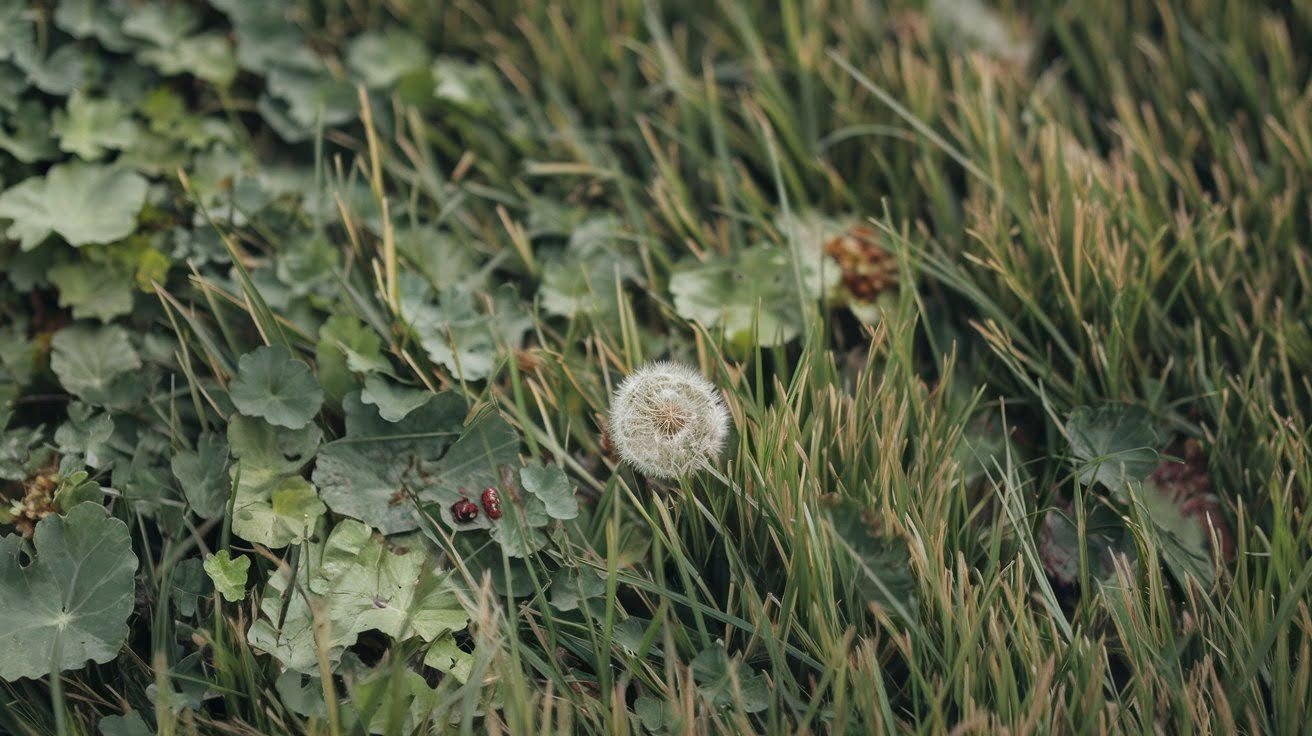
Weeds love overly moist soil conditions that stress your grass and create opportunities for invasion. Chinch bugs, billbugs, and other lawn pests thrive in the humid environment created by excessive watering. They multiply faster and cause more damage in wet conditions.
Check for small brown patches that expand outward, which often indicate pest activity in waterlogged areas. Pests attack weak, overwatered grass first because it can’t defend itself effectively. Reducing moisture levels helps your grass recover its natural pest resistance.
7. Strong Musty or Sour Odors

Healthy soil smells fresh and earthy. Overwatered lawns develop musty, sour odors from anaerobic bacteria in oxygen-starved soil.
This unpleasant smell intensifies during hot weather and indicates harmful bacteria multiplying while beneficial organisms die off in waterlogged conditions.
8. Algae and Moss Growth on Soil Surface

Green, slimy algae on soil surfaces signal excessive moisture problems. This growth blocks air from reaching roots while trapping more water.
Moss also thrives in consistently damp areas, gradually replacing grass and worsening drainage issues in affected sections.
9. Compacted Soil That Resists Water Absorption
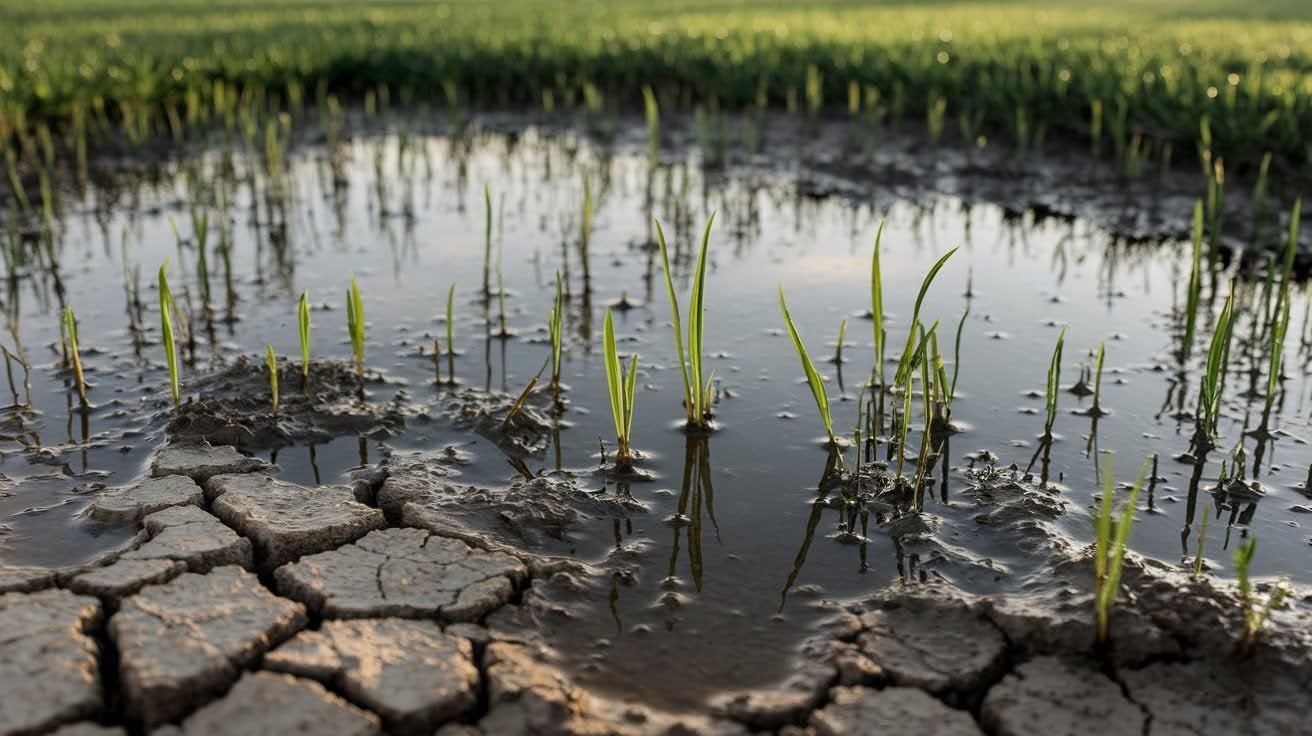
Overwatered lawns develop compacted soil that ironically repels water during dry periods. Constant saturation destroys soil structure, causing runoff instead of absorption.
Test with a screwdriver – difficulty penetrating soil indicates compaction from excessive moisture, damaging natural drainage capabilities.
Warning Signs of Overwatering
Too much water affects both the soil and root system, creating hidden problems below the surface.
- Soil becomes compacted and prevents air flow.
- Roots stay shallow instead of growing deep.
- Root rot shows as black, mushy roots.
- Healthy roots should be firm and light-colored.
- Thatch builds up quickly and blocks soil access.
- More than half an inch of thatch indicates trouble.
- Pulling the grass back helps reveal hidden damage.
Conclusion
You now know exactly what overwatered grass looks like and can catch the problem early. From my lawn care experience, the key signs are yellowing from oxygen deprivation, spongy texture, standing water, fungal growth, patchy areas, and increased pests.
The solution is stopping excess water immediately and switching to deep, infrequent watering 1-2 times weekly. Your grass will recover once you let the soil dry out and establish proper irrigation habits.
Remember that healthy grass needs time to breathe between watering sessions. Most lawn damage comes from good intentions and too much care.
What signs of overwatering have you noticed in your own yard? Share your experiences in the comments to help other homeowners avoid these common mistakes.
Frequently Asked Questions
What does overwatered grass look like in the early stages?
Overwatered grass initially appears yellow or pale, starting from the base of the blades rather than the tips. The lawn feels spongy or soft when you walk on it, and your footprints leave lasting impressions that don’t spring back quickly.
How can I tell if my grass is overwatered versus underwatered?
Overwatered grass yellows from the base up and feels spongy, while underwatered grass yellows from the tips down and feels firm or crunchy. Overwatered lawns often have standing water, mushrooms, and increased pest problems that drought-stressed grass doesn’t develop.
What are the most obvious visual signs of overwatered grass?
Standing water that doesn’t drain within 30 minutes, mushrooms or fungal growth appearing after watering, thin patchy areas despite adequate water, and a spongy lawn texture are the most obvious signs. Yellow discoloration around sprinkler heads is also common.
Can overwatered grass recover, and how long does it take?
Overwatered grass can recover if you stop watering immediately and let the soil dry out completely. Recovery typically takes 2-4 weeks, depending on damage severity, weather conditions, and grass type. Severely damaged areas may need reseeding.
Why does my grass look worse after I water it more?
Excess water prevents oxygen from reaching the grass roots, causing them to suffocate and become shallow. This creates weak grass that’s prone to disease, pests, and fungal problems. More water actually makes these problems worse, not better.




